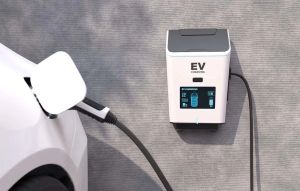


CHAdeMO vs. CCS: Key Differences in Electric Vehicle Fast Charging Standards
As electric vehicles (EVs) become more widespread, the need for efficient and reliable charging infrastructure is growing. CHAdeMO and CCS (Combined Charging System) are two of the most prominent fast-charging standards for DC (Direct Current) charging, each offering unique features and advantages suited for different markets and vehicle types.As a leading EV charger manufacturer in China, LiCB Charge offers reliable AC and DC electric vehicle charging stations along with comprehensive charging solutions.
CHAdeMO, short for CHArge de MOve, is a fast-charging standard primarily developed by Nissan and several Japanese companies in 2010. It has become a widely adopted charging standard, particularly in Japan and parts of Asia. CHAdeMO is designed for DC fast charging, enabling much faster charging times than traditional AC charging. A typical CHAdeMO charging station can deliver up to 50 kW, allowing EVs to charge to 80% in under an hour.
One of the standout features of CHAdeMO is its bidirectional charging capability. This means that not only can electricity flow from the charger into the vehicle, but it can also flow the other way—from the vehicle back to the grid or to a home. This feature is particularly useful for Vehicle-to-Grid (V2G) applications, where an EV can supply power to the grid during peak demand periods.
The Combined Charging System (CCS) is a universal charging protocol developed to support both AC and DC fast charging through a single connector. It is rapidly becoming the dominant standard in Europe and North America, gaining popularity due to its wide compatibility with many major automakers, including BMW, Volkswagen, Ford, and General Motors.
CCS can deliver up to 350 kW of power, allowing an EV to charge to 80% in just 30 minutes, making it ideal for long-distance travel and commercial fleets. The system uses Type 2 connectors in Europe and Type 1 connectors in North America, incorporating additional pins for DC fast charging.
| Factor | CHAdeMO | CCS |
|---|---|---|
| Charging Speed | Up to 50 kW, 80% charge in < 1 hour | Up to 350 kW, 80% charge in ~30 minutes |
| Charging Options | DC fast charging only | AC and DC charging with one connector |
| Compatibility | Nissan, Mitsubishi, and a few others | Wide compatibility with many automakers |
| Bidirectional Charging | Yes (Vehicle-to-Grid capability) | Yes (Vehicle-to-Grid capability) |
| Availability | Common in Japan and Asia | Common in Europe, North America, growing globally |
| Cost | Generally less expensive | Typically more expensive, especially for fast chargers |
| Adoption Rate | Widely adopted in Japan and Asia | Increasingly common in Europe, North America |
Widespread Availability in Japan and Asia: CHAdeMO charging stations are common, especially in Japan, making it convenient for owners of compatible vehicles like the Nissan Leaf.
Bidirectional Charging: The ability to send power back to the grid is a unique feature, beneficial for V2G applications and renewable energy integration.
Lower Costs: CHAdeMO stations tend to be less expensive to install, which may translate to lower charging fees.
Wider Compatibility: CCS is supported by many major automakers, making it a versatile choice for a broader range of EVs.
Faster Charging: With charging speeds up to 350 kW, CCS offers much faster charging, ideal for long-distance travel and fleet operations.
Dual Charging Modes: Unlike CHAdeMO, which only supports DC, CCS supports both AC and DC charging, offering more flexibility.
Expanding Global Availability: CCS is increasingly common in Europe and North America, with a growing network of ultra-fast chargers.
The choice between CHAdeMO and CCS depends largely on the vehicle and region. If you own a Nissan Leaf or other vehicles that support CHAdeMO, and live in Japan or East Asia, CHAdeMO is an excellent option. If you drive a vehicle from a major automaker that supports CCS, and live in Europe or North America, CCS might be a better choice due to its faster charging speeds and broader infrastructure.
Both CHAdeMO and CCS are vital charging standards that cater to different EV owners. While CHAdeMO excels in certain regions, CCS is poised to dominate globally with its versatile capabilities and faster charging speeds. As the electric vehicle landscape evolves, both standards will continue to shape the future of EV charging.
